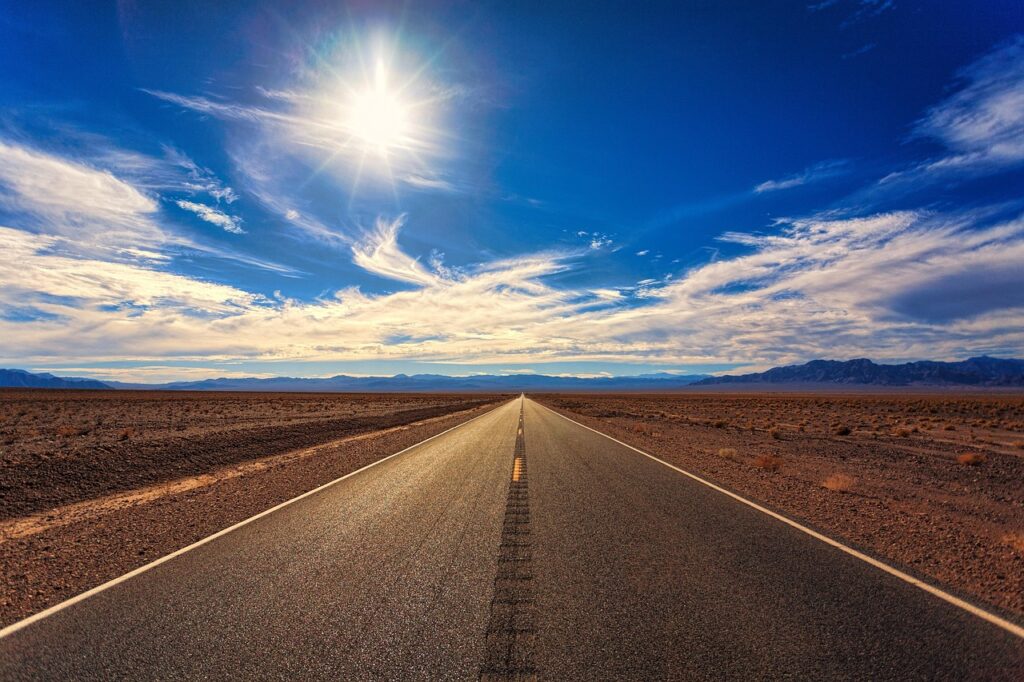Know Before You Go
Before you start requesting permits or mapping routes, it’s essential to understand exactly where you’re going and what kind of land you’ll be on. California’s desert regions offer some of the most remote and beautiful wilderness in the U.S., but they’re also governed by different agencies with different rules.
What Counts as “Desert Wilderness” in California?
Not everything sandy and dry qualifies as designated wilderness. In California, “desert wilderness” typically refers to protected areas within the following agencies:
Bureau of Land Management (BLM) holdings
California State Parks with desert zones
National Parks and Preserves within desert ecosystems
These lands are often remote, ecologically sensitive, and governed by special rules around access and use. Knowing the difference is more than trivia it directly affects the permits you need and what activities are allowed.
Popular Destinations
Each region offers something different, from geological wonders to secluded trails:
Anza Borrego Desert State Park: Largest state park in California, with wildflower blooms, slot canyons, and accessible backcountry roads.
Death Valley National Park: The hottest place on Earth. Famous for extreme conditions, salt flats, and remote canyons.
Mojave National Preserve: A quieter alternative with volcanic formations, Joshua tree forests, and sand dunes.
These are just the headliners. Hundreds of square miles across the southern California desert fall within lesser known wilderness designations as well.
Understanding the Land Management Agencies
Not all desert public land is managed the same way, and that matters when it comes to permits and access:
BLM Land: Often allows dispersed camping, but may require fire permits or seasonal restrictions. Generally more flexible but less marked.
California State Parks: More structured rules permits often needed for overnight trips and backcountry trail use.
National Parks/Preserves: Heavily regulated. Some require advance reservation systems or designated campsites.
Before finalizing your plans, identify exactly which agency manages the land you’ll be on. This determines everything from permit application processes to what gear you’re allowed to carry.
Understanding these distinctions will save you from last minute surprises and potential fines once you’re deep in the desert.
Permits You’ll Probably Need
Getting into California’s desert wilderness legally and without hassle starts with permits. For most areas, you’ll need a backcountry camping permit if you plan to stay overnight beyond developed campgrounds. Fires? That’s a separate one. Flame permits are required even for gas stoves on many lands, especially during high risk months. Driving? Off pavement routes often call for vehicle access permits too, depending on the land agency in charge.
Apply online, and do it early. As of 2026, several permit systems (especially in national parks and Bureau of Land Management areas) are tightening registration windows. Some open months in advance and fill quickly. Procrastinators lose out especially with annual quotas and lottery draws now more common in high demand zones like the Cottonwood Mountains in Death Valley or the remote canyons of the Mojave Preserve.
Special use permits are another layer. Planning to bring a large group? Filming a vlog series or editorial shoot? You’ll need prior written approval, sometimes with insurance or ranger coordination. These permits can take 30 60 days to process, so plan accordingly. Bottom line: skip the red tape nightmares by getting your paperwork lined up well ahead of your wheels hitting the dirt.
Essential Trip Planning Tactics

Desert hiking is a different beast. Shade is rare, water’s precious, and the terrain can fool you if you’re not paying attention. Topographic maps are your best friend here read them, don’t just glance. Understand elevation gains, wash routes, and where dry creek beds can lead you astray. GPS helps, but backup with a paper map that won’t die in the heat.
For 2026, there have been updates to known water sources across California’s deserts. Some springs are no longer reliable due to drought shifts, while a few previously dry tanks have been restored. Check the latest BLM and park service data before you go. Pin these on your route and have a backup plan if one’s empty.
When it comes to gear, think light but not fragile. Moisture wicking base layers are non negotiable. Redundant power sources a solar charger plus a spare battery bank can keep you in touch if something goes wrong. And those fancy ultralight stoves? Make sure yours handles wind and uses minimal fuel. Nothing eats more morale than waiting an hour for lukewarm food.
Solo hikers face tighter scrutiny now, especially in areas with extreme exposure and limited cell coverage. Rangers want to see detailed itineraries, emergency contact plans, and enough supplies to survive if something goes sideways. Going it alone demands extra proof you know what you’re doing, because search and rescue doesn’t want to become your backup plan.
Desert Safety is Not Optional
Planning a trip to California’s desert wilderness? Safety must lead your checklist not trail behind it. Harsh climate shifts, wildlife, and isolation each bring serious risks, especially in zones where rescue may be hours (or days) away. Here’s how to prepare for the extremes of the desert without compromising your well being or damaging the land.
Surviving Temperature Extremes
In California’s deserts, a single 24 hour period can swing from triple digit heat to below freezing cold. Whether it’s a mid July trek through Death Valley or a winter night in the Mojave, preparation is non negotiable.
During the day:
Start early and rest during peak sun hours (generally 11 a.m. to 3 p.m.)
Wear a wide brimmed hat, UV protective clothing, and sunscreen
Hydrate constantly, even if you don’t feel thirsty
At night:
Bring a sleep system rated for low temps even in spring and fall
Layer clothing rather than relying on a single heavy jacket
Keep batteries and electronics insulated from the cold
Readiness for Wildlife and Weather Events
The desert isn’t just hot it’s reactive. Contingency planning can prevent minor issues from turning into life threatening emergencies.
Essential safety items include:
A well stocked snakebite kit (especially for Southern and Lower Colorado deserts)
A Personal Locator Beacon (PLB) or satellite messenger for emergency contact
Eye protection and a respirator style mask for sudden sandstorms
Tip: Know that sandstorms can arrive with little warning get low, cover your face, and locate flat, clear ground until it passes.
Navigation: Trust the Right Tools
Maps matter more when the desert hides signal bars. Don’t rely on smartphone apps alone.
Use paper topographic maps as your primary guide
Bring a GPS unit with pre loaded regional maps and back up batteries
If using smartphone apps, download all offline content before departure
Pro Tip: Compass literacy isn’t outdated use it to cross reference your position in areas with poor satellite reception.
Protecting the Ecosystem: Leave No Trace
The desert is rugged but its ecosystems are surprisingly delicate. Biological soil crusts and rare plant life can take decades to recover once damaged.
Follow these best practices:
Camp at least 200 feet from any water source
Keep group sizes small to reduce impact
Pack out all waste, including food scraps and hygiene items
Stick to established trails and campsites whenever possible
Preserving the land ensures tomorrow’s explorers can experience it too. Respect the fragility beneath your boots.
Where to Go if You Want Solitude
Skip the crowded overlooks and glossy trail guides. If you’re looking for silence, granite, and wind, the lesser trekked backcountry loops in the Colorado and Sonoran regions are what you’re after. Start by eyeing zones like Little Picacho Wilderness near the Colorado River or the unnamed washes east of Anza Borrego’s main corridors. These aren’t the spots with big signs or cell signal they’re the ones buried in topo maps and kept alive by word of mouth.
Your secret weapon? Local ranger stations. Walk in, ask clear questions, and listen more than you talk. Rangers often know about underused trailheads, forgotten jeep tracks, and water caches that aren’t on AllTrails. These tips aren’t in the manuals; they’re earned through conversations and trust.
As for timing, think shoulder seasons. Early spring means cool mornings, wildflower explosions, and a break before the buzz of tourists. Late fall offers the same peace in reverse, with golden light and fewer bugs. Hit it wrong, and you’re stuck in 110° heat or washed out washes timing isn’t optional out here. Plan tight. Then go.
(For another stunning and remote California experience, check out Exploring the Lost Coast: California’s Remote Hiking Frontier)
Last Minute Tips That Actually Matter
Even if you’ve planned your California desert trip down to the last granola bar, the final days before departure are crucial. Late breaking updates, supply hiccups, and weather shifts can easily derail an otherwise solid trip. Here’s how to stay prepared in that final countdown:
Recheck Permit Regulations One Week Before Departure
Permitting rules on public lands can and do change with little notice. Fire danger, wildlife activity, and seasonal closures are factors that might affect your specific route or destination.
Visit the official websites for national parks, BLM areas, or state lands
Verify specifics like fire restrictions, group size limits, and access road closures
Look for alerts or updates posted within the past week
Assume No Services Will Be Available
Desert towns and outposts are notoriously unpredictable.
Gas stations may close early, run out of fuel, or shut down without warning
Small markets don’t always restock frequently especially off season
Pro tip: Carry extra gas, water, and food even if you “plan” to restock on the way. Self sufficiency is not optional; it’s required.
Pack Physical Copies of Crucial Documents
Signal failure is common in remote desert stretches. Relying on cloud stored permits, maps, or IDs could prove disastrous if you can’t access them.
Print your permits and slip them into a waterproof pouch
Carry hard copies of topographic maps and compass references
Include a photo ID to prove eligibility if checked by rangers
Final Reminder
No matter how experienced you are, the California desert remains a place of extremes. Plans can fail. Weather can swing wildly. Resources might vanish just when you need them.
Stay sharp, tread lightly, and respect the desert it doesn’t hand out second chances.
